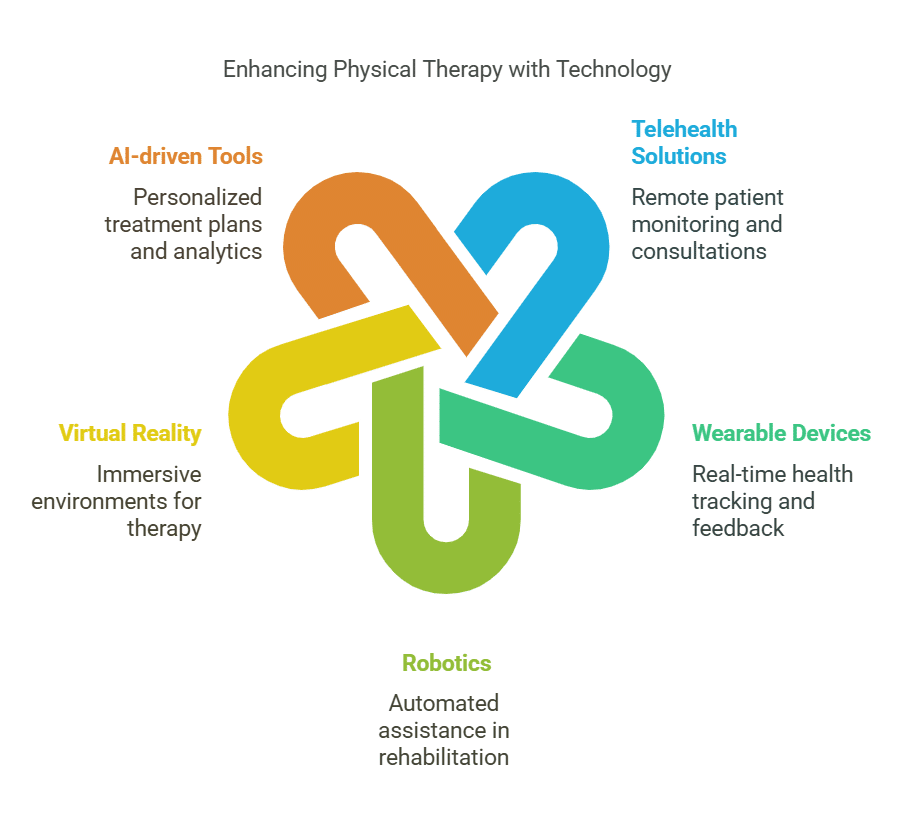Physical therapy (PT) is a healthcare profession focused on improving mobility, relieving pain, and enhancing physical function through therapeutic techniques. It plays a key role in restoring the quality of life of patients, especially those recovering from chronic conditions and surgeries/injuries. Continuing education (CE) allows professionals to stay updated with all the latest advancements and techniques. These well-structured programs will not only improve your skills but also fulfill your license requirements.
In this blog, we will go through the latest trends that you can gain through physical therapy continuing education programs. Given below are some of these trends that will help you provide better care to your patients and stay at the top of your professional career.
Top trends in physical therapy continuing education
The field of physical therapy is highly dynamic. Several new trends, like the advancement of tools and modern scientific research, are changing the sector. You must expand your knowledge through regular learning to stay ahead of the competition. Have a look at the latest advancements in the physical therapy sectors to earn your continuing education units.
1. PRISM model for pain:
The PRISM pain model is gaining popularity in continuing education in physical therapy. PRISM stands for physical, receptive, integrative, social, and mind-body factors. Through this training, you can understand all the aspects of pain, such as the physical, emotional, and psychological condition of the patient. The model allows you to cover all these elements with the traditional pain symptoms to create better care plans for a complete pain management course for the patients.
2. Aquatic therapy:
Aquatic therapy involves therapeutic exercises performed in water to improve mobility, strength, and pain relief. Aquatic therapy can help patients suffering from chronic pain, post-surgical conditions, arthritis, etc. Water resistance reduces the strain on joints and facilitates their movement. The continuing education programs include aquatic therapy techniques to teach you about water-based rehabilitation plans. By learning the elements of this therapy, you can increase the patient’s recovery and reduce the risk of injury.
3. Telehealth:
The physical therapy continuing education courses include telehealth training. They focus on delivering virtual care properly. You learn to use telehealth platforms and analyze the patients remotely. Telehealth CEU programs focus on areas like patient assessment, exercise guidance, and compliance monitoring through digital platforms. You gain skills needed to adapt to modern healthcare demands, especially in underserved or rural areas.
4. Patient-centered care:
You need to focus on personalized treatment for each patient. Continuing education courses will help you create custom care plans. This approach includes clear communication and active patient involvement for better outcomes. It’s essential to respect the patient’s perspective and prioritize their overall well-being. By doing this, you can provide more effective and empathetic care that matches their lifestyle and long-term health goals.
5. Interdisciplinary collaboration:
The healthcare sector is moving towards a more collaborative approach where you have to work with speech therapists and physicians together. The CE programs offer interdisciplinary learning and help you learn the responsibilities of other professionals as well. You can benefit from it in home care centers. So, it is essential to follow a multidisciplinary approach for the best outcomes.
6. Sustainability and environmental health in therapy:
With a growing focus on sustainable development across all industries, physical therapy also welcomes eco-friendly practices. You will learn about the impact of environmental factors on health and green building practices for physical therapy facilities. Also, you will work with eco-friendly materials and gain knowledge of sustainable practices like digital record implementation, using energy-efficient equipment, etc.
Advancements in tools and technology in physical therapy
Technology will play a significant role in the era of modern patient care. Many new advancements will enhance the physical therapy practice like:
1. Wearable technology:
One of the top players in the industry is motion capture technology. You can couple it with wearable sensors and improve the precision and personalization level of care plans.
2. Robotics:
Advancements in robotics, like exoskeletons and prosthetics, improve patient care. Many CE programs now offer hands-on workshops and courses. You will learn to use the new tools and the ways to apply them in rehabilitation.
3. Virtual reality (VR):
You can use VR technology to improve speed and balance issues. You will get an immersive experience to tackle them properly. Games increase the engagement level of the patients and make therapy more fun. Patients are more likely to commit to their appointments and complete their care plans.
Conclusion
The sector of physical therapy is changing quickly. Physical therapy continuing education is necessary to maintain your professional reputation and provide high-quality care to all your patients. The PTCE programs will keep you updated with all the latest trends and industry norms so that you can stay at the forefront of your profession. You can now use telehealth and virtual education, which make the learning process easier. Its specialized areas of orthopedic rehabilitation and neurological care will allow you to address the patient’s needs well.









































